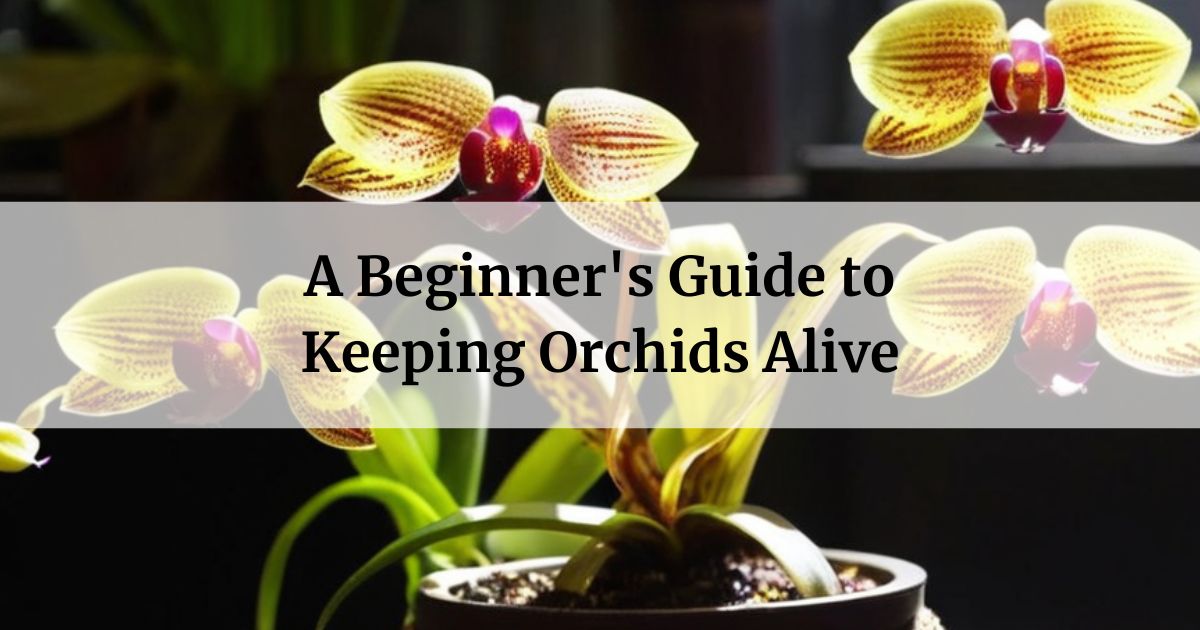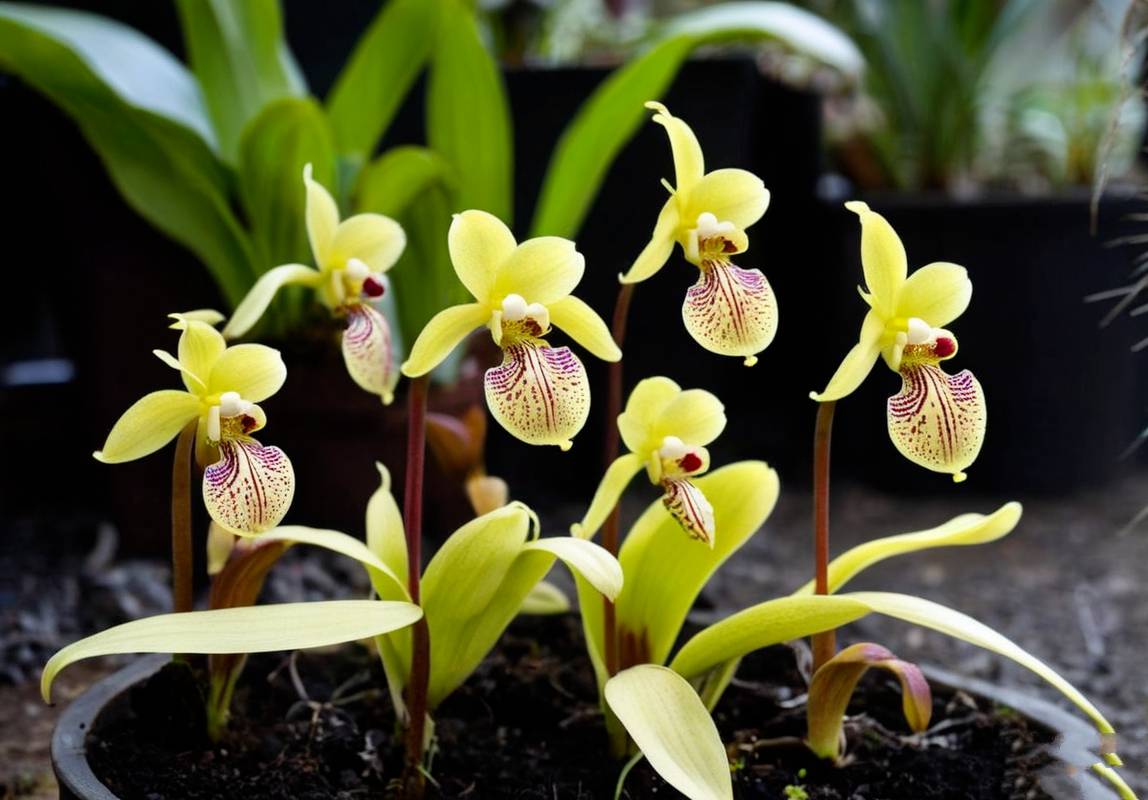
Orchids, often regarded as delicate and finicky plants, have captivated the hearts of many with their stunning blooms and elegant appearance.
While they may seem intimidating to care for, with the right knowledge and techniques, keeping orchids alive can be a rewarding and enjoyable experience.
In this article, we will explore the essential steps to ensure the health and longevity of your orchids, debunk common misconceptions, and provide expert tips for optimal care.
Key Takeaways:
- Orchids require a well-draining potting medium, such as orchid bark, to prevent root rot.
- Water orchids only when the potting medium and roots are dry, typically every 7-10 days.
- Provide bright, indirect light for optimal growth and blooming.
- Prune the faded spike to encourage new growth and future blooming.
- Understand the specific needs of your orchid species for tailored care.
RELATED: 22 Different Types of Orchids with Pictures
In this article
Watering

Contrary to popular belief, orchids are not as demanding when it comes to watering as they are often portrayed. The key to keeping orchids alive lies in understanding their natural habitat and replicating those conditions as closely as possible.
In their natural environment, orchids typically grow on the sides of trees, with their roots exposed to the air. Therefore, they require a well-draining potting medium that mimics the airy environment they thrive in. Instead of traditional soil, opt for a chunky mix composed of pieces of bark or specialized orchid bark.
Overwatering is one of the most common mistakes made when caring for orchids. These plants despise being waterlogged, as it can lead to root rot and ultimately the demise of the orchid. To prevent overwatering, it is crucial to allow the roots and potting medium to dry out between waterings.
Before watering your orchid, check the moisture level by gently inserting your finger into the potting medium. If it feels dry, it’s time to water. However, if it still feels moist, hold off on watering until it dries out.
Potting Medium
Orchids, being unique and delicate plants, have specific requirements when it comes to their potting medium. To ensure the health and longevity of these exquisite flowers, it is crucial to provide them with a well-draining potting medium. Orchid bark, with its chunky texture and excellent drainage properties, is an ideal choice.

Orchid Potting Mix Orchid Bark 1 QT and Organic Perlite for Plants 1 QT, All Natural
- 100% Organic Material All Natural
- Suitable for Multiple Types of Orchids
- Good Balance of Drainage and Water Retention
–
Characteristics of Orchid Bark:
- Well-Draining: Orchid bark allows for excellent drainage, preventing waterlogged conditions that can be detrimental to orchid roots.
- Aeration: The chunky texture of orchid bark promotes air circulation around the roots, helping to prevent root rot and promote healthy growth.
- Long-Lasting: Orchid bark is durable and can last for several years before needing replacement, making it a cost-effective option for orchid cultivation.
- pH Neutral: It typically has a neutral pH, which is beneficial for orchids that prefer slightly acidic to neutral growing conditions.
- Variety of Sizes: Orchid bark comes in different sizes, from fine to medium to large chunks, allowing for customization based on the orchid species and pot size.
Unlike regular soil, which retains moisture and can suffocate the delicate roots, orchid bark allows for proper airflow and prevents the roots from becoming waterlogged. This helps to prevent the dreaded root rot, a common issue that can lead to the demise of orchids.
Lighting Requirements

Proper lighting is essential for the healthy growth of orchids. Most orchids thrive in bright, indirect light. Placing your orchid near a window that receives morning sun is an excellent choice, but be cautious of direct sunlight, as it can scorch the leaves.
If your orchid is not receiving enough light, it may fail to bloom or produce weak, elongated growth. On the other hand, excessive light can cause leaf burn and hinder the plant’s overall health. Finding the right balance is crucial for optimal growth and blooming.
Pruning and Preparing for Blooming
Orchids are known for their captivating blooms, which can last for several months. However, once the flowers begin to fade and drop, it is essential to prepare the plant for its next blooming cycle.
Pruning the spike, which is the stem that held the flowers, is necessary to redirect the plant’s energy towards new growth. To do this, locate the faded spike and trim it just above a visible node or bud. This will encourage the orchid to produce a new spike and bloom again in the future.
Frequently Asked Questions
How often should I water my orchid?
Orchids should be watered only when the potting medium and roots are dry. This typically occurs every 7-10 days, but it may vary depending on factors such as temperature, humidity, and the type of orchid. It is crucial to monitor the moisture level and avoid overwatering, as it can lead to root rot.
Can I use regular soil for my orchid?
No, orchids require a well-draining potting medium to thrive. Regular soil retains too much moisture and can suffocate the roots, leading to root rot. Instead, opt for a specialized orchid bark or a mix composed of bark, perlite, and other porous materials.
My orchid is not blooming. What am I doing wrong?
Several factors can affect the blooming of orchids. Insufficient light, improper watering, and inadequate fertilization are common culprits. Ensure your orchid receives enough bright, indirect light, follows a proper watering schedule, and receives a balanced orchid fertilizer during the growing season to encourage blooming.
How do I know if my orchid is getting enough light?
Orchids require bright, indirect light to thrive. If the leaves appear dark green and elongated, it may indicate that the orchid is not receiving enough light. Conversely, if the leaves turn yellow or develop brown spots, it may be a sign of excessive light exposure.
Can I mist my orchid to increase humidity?
While orchids appreciate humidity, misting alone may not provide sufficient moisture. Instead, consider placing your orchid on a humidity tray filled with pebbles and water. As the water evaporates, it creates a humid microclimate around the plant. Additionally, grouping orchids together can create a naturally humid environment. Remember to clean the humidity tray regularly to prevent the buildup of bacteria or mold.
Remember to avoid overwatering, provide bright indirect light, and properly prepare your orchids for their next blooming cycle. With patience and attentiveness, you can enjoy the beauty of these exquisite plants for years to come.
YOU MIGHT ALSO LIKE: Worst for Beginners: 7 Houseplants to AVOID as a New Gardener







